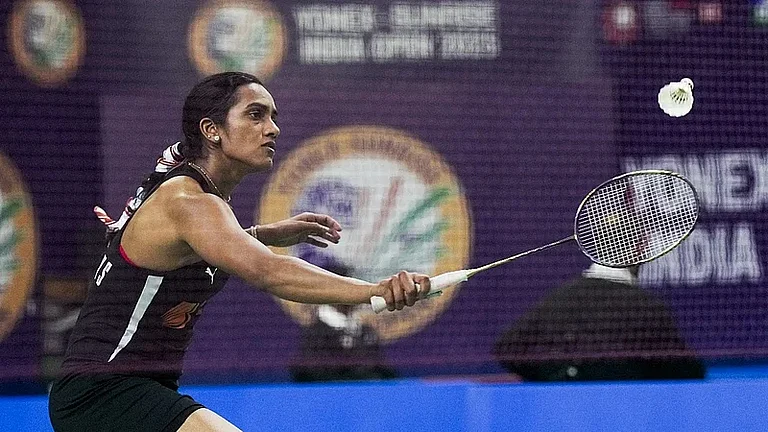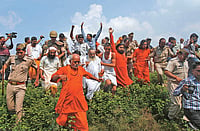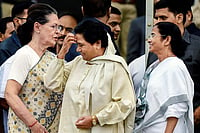Politics, these days, has been turned into a performance art. Due to the ubiquity of electronic media, the element of performance has been accentuated like never before. Naturally, when someone enters politics, that person’s political conviction morphs into what is regarded as necessary for his image. His ‘real self’ gets subsumed by his political self in the public sphere. But now, many things he says or does are often seen as a performance, a drama enacted before the public eye.
If we try to describe politics in the terms of Vedantic symbolism, we might say that he is empowered to prove the ‘rope as snake’, or vice versa. His speech, laughter, emotions and dressing sense, all become subjects of public discourse—all are the stuff of performance. Conversely, habituated as we are to a staple of political posturing, we too start searching for ‘performances’ in our politicians’ everyday lives.
In the recently held Congress plenary session in Delhi, Rahul Gandhi’s speech was widely appreciated by a section of the media and the public, who discussed it threadbare. Rahul Gandhi came up with a new slogan: ‘It is time to change (ye samay badlav ka hai)’. He successfully used the story of the Mahabharata in his speech and tried to argue that the Congress was right now at a juncture similar to that of the banished Pandavas. It is perhaps revealing of the more ambiguous notes of contemporary Indian political discourse that the Mahabharata is being cited much more than the Ramayana. Prime Minister Narendra Modi also frequently dips into the symbols and characters of the Mahabharata and its moral universe.
The plenary lecture confirmed the emergence of Rahul Gandhi as a powerful and mature speaker. He has realised that he has to compete with a charismatic, impactful leader like Narendra Modi. Moreover, Modi speaks with great conviction; a large section of people trusts him implicitly. Rahul’s oratory itself was impressive too; now he has to win the trust of people. He is slowly moving towards that path.
The growing symbolic use of Mahabharata shows how Indian politics—highly complex and highly competitive—is in need of metaphors from the epics, often with multiple meanings, often couched in ambiguity, with the burden of exegesis on the listener.
When he declaimed, ‘Main Shivbhakt hoon’(I am a devotee of Lord Shiva), Rahul was also attempting to tailor Hinduism to fit his needs. It has been noticed that he is using local versions of religious symbols during his campaigns to create a close connect with people. His recent visit to the Sharadamba temple at Sringeri in Karnataka can be seen in this light. Recently, Narendra Modi’s offering of a ‘chadar’ at Sufi saint Hazrat Khwaja Moinuddin Chisti’s shrine at Ajmer Sharif, attempting a link with this great, living tradition of syncretism, may be considered to be a similar outreach. The BJP’s attempts to connect with Buddhism, equating ‘dhamma’ with ‘dharma’, shows its need for being considered an agent of understanding and accommodation in one sense and as an attempt to expand their connects with other religious memories on the other. Rahul Gandhi too may have to come up with new ways to connect with multiple sects, panths and religious traditions to compete with the BJP. Heading a party that has always sought to accommodate various faiths should help him in this venture.
Rahul’s rhetorical use of the Hindu epic was a clever ploy—he thus partook of the symbolic power of our religious texts, once a prerogative of the BJP. As we know, the success of the BJP’s discourse rests on its capacity to evoke cultural memories of Hinduism, harnessing them to coral Hindu identity, then reaping a rich harvest at the hustings. Now, Rahul has joined battle in this contested field, but is using its well-worn tools in his own way. But it is not an easy battle to win, for he has to perform in the terrain of his adversary’s choice.
However, the BJP has adroitly fused tradition and modernity for its use. Hence the pre-eminence of ‘development’ in the BJP handbook. The signifiers of development, when linked with deft alliances with caste-based political parties, all mapped out on the warp and weft of the social canvas, are the most potent weapons in the BJP’s arsenal. Such processes and strategies, imitative of the old Congress, mobilised a major chunk of Indian voters in 2014.
The Congress is trying to evolve its own version of this, which seems to be a mix of traditional memories, caste identities, anti-incumbency feelings and hope for a generation of disillusioned, unemployed youths. Rahul is also focusing on evolving a plan for politically engaging the poor and the marginal sections, to mobilise it as a popular base. Issues that are relevant to tribals, Dalits and marginal communities are therefore evoked regularly. Economic empowerment of subaltern communities is firmly lodged on his agenda.
Here, too, Rahul is on ground well-trodden by the BJP. Several Hindutva social organisations, as is well known, are reaching out to these communities by responding to their developmental aspirations, while also working tirelessly among tribals and marginal communities to draw them into the Hindu fold. Vanvasi Kalyan Kendras are functioning successfully among tribals across the country—opening schools and hospitals among them and working to support their traditional skills, which honours their sense of pride in their indigenous knowledge. Apart from these, they are helping them make temples of local deities. In Uttar Pradesh, temples of Mata Sabari have been built for the community of Musahars (rat-pickers). Temples of Hanuman and other Hindu deities have been built in the tribal regions of Gujarat. All this bears fruit—over a few assembly elections, tribals who were traditional voters of the Congress shifted towards the BJP. The Sangh parivar is known to be involved in various social and religious projects in those areas. Similar observations have been made by journalists in Tripura. They pointed out how the RSS has been engaging Tripura’s tribals through various social projects. Does it not throw light on the BJP’s recent poll success there?
The Congress and Rahul Gandhi need to understand the religious aspirations of subaltern communities, and have to find out a way to slake their thirst. We need to understand that development is not the only need of marginal communities—they also require respect and dignity; they too have an insatiable desire to belong to the mainstream. During our recent fieldwork in Bundelkhand, we found numerically smaller, marginal communities like Saharia, Kabutari and others were expressing their desire for small temples for their ‘kul devi’ in their settlements. These temples are sites of religious aspiration and dignity, and no less crucial than economic or political empowerment. They serve not only as places for worship, but—in the age-old tradition of Indian village life—social and communal spaces. Thus, they play a role in the formation of public spheres—for marginal voices—in India’s rural society. Any politics bestows empowerment when it provides hope for a better future, which could be achieved some day with self-respect and dignity intact. Dignity works as an ‘elan vital’ (impulse of life)—a key factor that marginal communities cannot do without, something as essential as the air they breathe.
Hopefully, in the near future, symbols from tribal and Dalit religious life and from their rich folk traditions would appear in Indian political discourses as regularly as the great epics. It may happen when these communities acquire political confidence to speak out in their own idiom and a national platform to do so. We need to change the scene. As the Czech novelist Milan Kundera rightly suggests, “Every change of scene requires new expositions, descriptions, explanations”.
(The writer is director, GB Pant Social Science Institute, Allahabad)

























